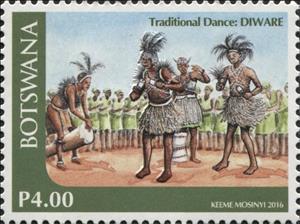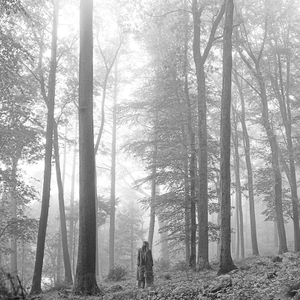Stamp: Diware (Botswana 2016)
Diware (Botswana 2016)
26 May (Botswana ) within release Traditional Dance in Botswana goes into circulation Stamp Diware face value 4 Botswana pula
| Stamp Diware in catalogues | |
|---|---|
| Michel: | Mi: BW 1031 |
| WADP Numbering System - WNS: | WAD: BW 005.16 |
Stamp is horizontal format.
Also in the issue Traditional Dance in Botswana :
- Stamp - Traditional Dance in Botswana - Diware face value 4.00;
- Stamp - Traditional Dance in Botswana - Tsutsube face value 5.90;
- Stamp - Traditional Dance in Botswana - Setapa face value 7.80;
- Stamp - Traditional Dance in Botswana - Hosana face value 10.00;
- Stamp - Tsutsube face value 5.90;
- Stamp - Diware face value 4;
- Stamp - Setapa face value 7.80;
- Stamp - Hosana face value 10;
|
Data entry completed
83%
|
|
|---|---|
| Stamp Diware in digits | |
| Country: | Botswana |
| Date: | 2016-05-26 |
| Size: | 40 x 30 |
| Perforation: | 13¾ x 13½ |
| Emission: | Commemorative |
| Format: | Stamp |
| Face Value: | 4 Botswana pula |
Stamp Diware it reflects the thematic directions:
Dance is an art form, often classified as a sport, consisting of sequences of body movements with aesthetic and often symbolic value, either improvised or purposefully selected. Dance can be categorized and described by its choreography, by its repertoire of movements or by its historical period or place of origin. Dance is typically performed with musical accompaniment, and sometimes with the dancer simultaneously using a musical instrument themselves.
Folklore is the body of expressive culture shared by a particular group of people; it encompasses the traditions common to that culture, subculture or group. These include oral traditions such as tales, proverbs and jokes. They include material culture, ranging from traditional building styles to handmade toys common to the group. Folklore also includes customary lore, the forms and rituals of celebrations such as Christmas and weddings, folk dances and initiation rites. Each one of these, either singly or in combination, is considered a folklore artifact. Just as essential as the form, folklore also encompasses the transmission of these artifacts from one region to another or from one generation to the next. For folklore is not taught in a formal school curriculum or studied in the fine arts. Instead these traditions are passed along informally from one individual to another either through verbal instruction or demonstration. The academic study of folklore is called folkloristics.
A tradition is a system of beliefs or behaviors (folk custom) passed down within a group of people or society with symbolic meaning or special significance with origins in the past. A component of cultural expressions and folklore, common examples include holidays or impractical but socially meaningful clothes (like lawyers' wigs or military officers' spurs), but the idea has also been applied to social norms and behaviors such as greetings, etc. Traditions can persist and evolve for thousands of years— the word tradition itself derives from the Latin word tradere literally meaning to transmit, to hand over, to give for safekeeping. While it is reportedly assumed that traditions have an ancient history, many traditions have been invented on purpose, whether it be political or cultural, over short periods of time. Various academic disciplines also use the word in a variety of ways.



